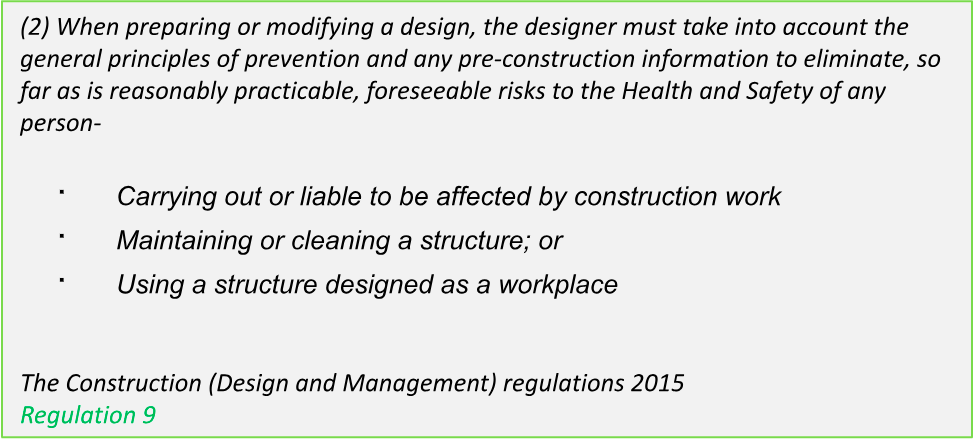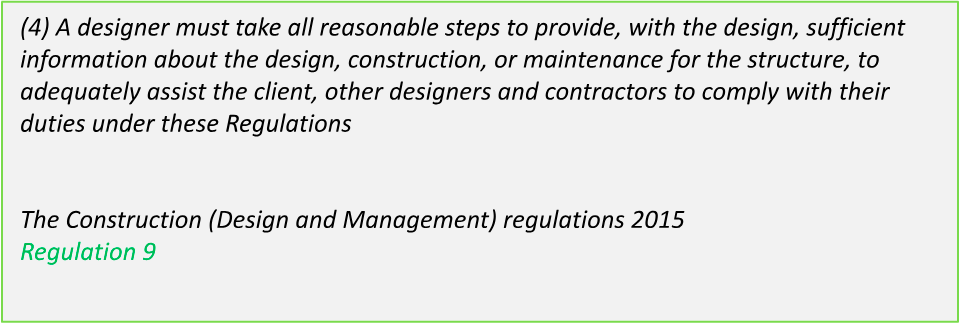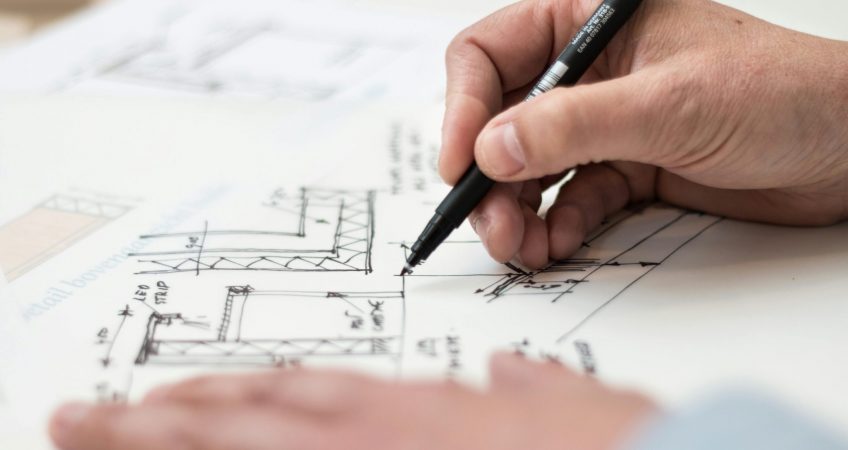The CDM 2015 regulations identifies and defines the role of various key dutyholders. One of these key dutyholders is the ‘Designer’. A designer under CDM is anyone who prepares or modifies a design for the purpose of construction. In this blog, we will identify and look at the 4 key CDM duties of a designer.
Designers working collaboratively and engaging to solve issues
If you are preparing a design to be used for the purpose of construction, irrespective if you a designing the whole building or a part of a building, a single element of it, providing a key service or component part or another type of structure you will be recognised and classified as a designer under CDM and you must apply and fulfil the duties specified in the legislation.
The term ‘designer’ is a broad term which does not just mean architect, but a designer can also include and operate in anyone of the following disciplines or roles:
- Civil and Structural engineers
- Quantity Surveyors
- Temporary Work Engineers
- Chartered Surveyors
- Technicians
- Principal Contractors and specialist contractor
- Clients can also be designers (if they have the capability)
- Anyone who alters or specifies a design
Note: Statutory requirements/standards are exempted i.e. Building Regs requirements are not considered designs under CDM 2015.
Under CDM 2015, Regulation 8 and 9 refers to designers and contains general and 4 specific duties that anyone undertaking a design needs to be aware of.
CDM Legislation also applies to designers- there are legal ramifications due to non-compliance
Regulation 8 defines the general duties which applies to all dutyholders including the designer.
So as a designer you must:
- Only accept an appointment on a project if you have the skills, knowledge and experience and capability to fulfil the role in a manner that secures Health and Safety of anyone affected by the project.
- Must only appoint someone on a project if they have the skills, knowledge and experience and capability to fulfil the roles in a manner that secures Health and Safety of anyone affected by the project.
- Must co-operate with others involved in the project
- Report anything you are aware of on the project which is likely to endanger health and safety
- Provide information and instruction as required
Regulation 9 defines the specific duties which applies only to the designer.
Duty 1:

How familiar is the client with the CDM regulations and are they aware of their duties? The Client duties have been enhanced under CDM 2015 and it is important that a client is aware of what their duties are. In many instances where a PD has been appointed the Client would have been informed of their duties. So, a simple check with the Client or PD would satisfy this requirement. However, if it’s a single contractor project or a principal designer has not yet been appointed, you may need to make the client aware of their duties, especially if they are not familiar with CDM.
Duty 2:

The 2nd duty is to eliminate as much risk as you can from your designs. The general principles of prevention conveys the initial and best way to deal with risk is to avoid the risk in the first place. Where risks cannot be avoided other measures must be used to reduce the risk to so far as is reasonably practical. The principles work best as part of a group exercise where different issues / solutions can be discussed and shared between team members.
The General Principles of Prevention include the following measures to reduce risk in design:
- avoiding risks
- evaluating the risks which cannot be avoided
- combating the risks at source
- adapting the work to the individual, especially as regards the design of workplaces
- adapting to technical progress
- replacing the dangerous by the non-dangerous or the less dangerous
- developing a coherent overall prevention policy which covers technology, organisation of work, working conditions, social relationships and the influence of factors relating to the working environment
- giving collective protective measures priority over individual protective measures; and
- giving appropriate instructions to employees.
(Source: Management and Health and Safety at work regulations 1999)
Remember, any designs must be:
- Safe to build
- Safe to use
- Safe to clean and maintain
- Safe to demolish
Duty 3

The 3rd designer duty is to reduce or control any risks that you have not been able to eliminate from your designs. You must provide information and communicate those risks to the PD who will in turn share with the rest if the project team.
Information on risks should be included in the pre-construction information for risk that are relevant to the build and health and safety file for risks that remail after project completion.
Duty 4:

The 4th and final CDM designer duty is to provide sufficient information with your designs. Often with construction design drawings, you may need to supply additional information. This information might include measurements, sequences, specifications, or any assumptions you have made. You may need to highlight any unusual hazards that are present in your design. Only include relevant information, but remember, what seems obvious to you might not be to the person who is building or installing during construction.

